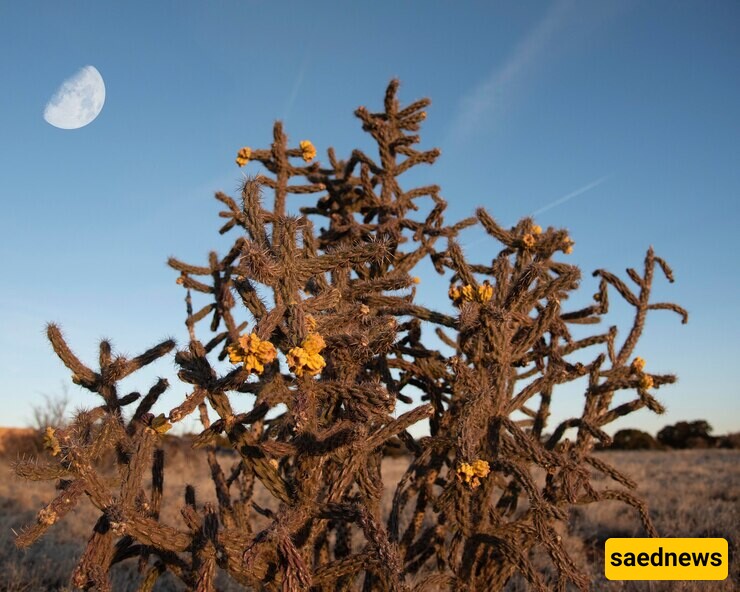SAEDNEWS: Desert plants endure some of the harshest conditions on Earth, thriving in scorching temperatures and scarce water. Their remarkable adaptations provide valuable insights into survival in extreme environments.

According to SAEDNEWS, deserts are defined by extreme heat, intense sunlight, and minimal rainfall, yet plants have developed extraordinary strategies to thrive in these hostile environments. By conserving water, minimizing heat exposure, and maximizing efficiency, desert flora turns adversity into resilience.
Water scarcity is the most critical challenge for desert plants. To address this, they employ several strategies:
1. Deep and Wide Root Systems
Many desert plants, like mesquite trees, develop extensive root systems that either plunge deep into underground aquifers or spread widely just below the surface to capture scarce rainfall.
2. Water Storage
Succulents, including cacti, store water in their thick, fleshy stems and leaves. This reservoir sustains them through prolonged droughts. For instance, the saguaro cactus can absorb hundreds of gallons of water during a single rainstorm.
3. Reduced Water Loss
Plants like agave and yucca have narrow or needle-like leaves, minimizing surface area and reducing water loss through evaporation. Many desert plants also have a waxy coating on their leaves and stems to seal in moisture.
Desert plants face relentless sunlight and scorching temperatures, requiring effective heat management.
1. Reflective Surfaces
Many plants, such as the creosote bush, have reflective, light-colored surfaces that deflect sunlight, reducing heat absorption.
2. Vertical Orientation
Some cacti, like the iconic saguaro, grow upright with ribs that provide shade and reduce exposure to direct sunlight.
3. Dormancy During Heat Spikes
Certain desert plants enter a state of dormancy during the hottest months, conserving energy and water until conditions improve.
Traditional photosynthesis requires plants to open their stomata (tiny pores) to absorb carbon dioxide, but this also leads to water loss. Desert plants have evolved specialized methods to minimize this.
1. Crassulacean Acid Metabolism Photosynthesis
Crassulacean Acid Metabolism (CAM) is a unique photosynthetic pathway used by many desert plants, such as cacti and agaves. By opening their stomata at night when temperatures are cooler, these plants reduce water loss while storing carbon dioxide for use during the day.
2. Slow Growth Rates
Desert plants grow slowly to conserve energy and resources, focusing on survival rather than rapid development.
Beyond heat and drought, desert plants must protect themselves from herbivores and abrasive environments.
Spines and Thorns
Many cacti and other succulents have spines instead of leaves. These not only deter animals but also help shade the plant and reduce water evaporation.
Toxicity
Some desert plants, like the oleander, produce toxic compounds that make them unpalatable to animals.
Protective Bark
Trees like the Palo Verde have green bark that performs photosynthesis while being tough enough to withstand the elements.
Surviving as a species in the desert often depends on effective reproduction strategies.
1. Rapid Germination
Plants such as desert wildflowers produce seeds that can remain dormant for years, waiting for the rare event of rainfall to germinate. Once conditions are favorable, these plants grow, flower, and seed quickly to complete their life cycle.
2. Seed Coating
Hard seed coats protect the seeds from harsh conditions and predators, ensuring they survive until germination is possible.
Desert plants are masters of adaptation, demonstrating resilience and efficiency in one of the world’s most challenging environments. Their survival strategies offer not only inspiration for humans but also insights into sustainable living and climate resilience. Through water conservation, temperature regulation, and ingenious reproduction, desert plants exemplify nature's ability to thrive against all odds.

